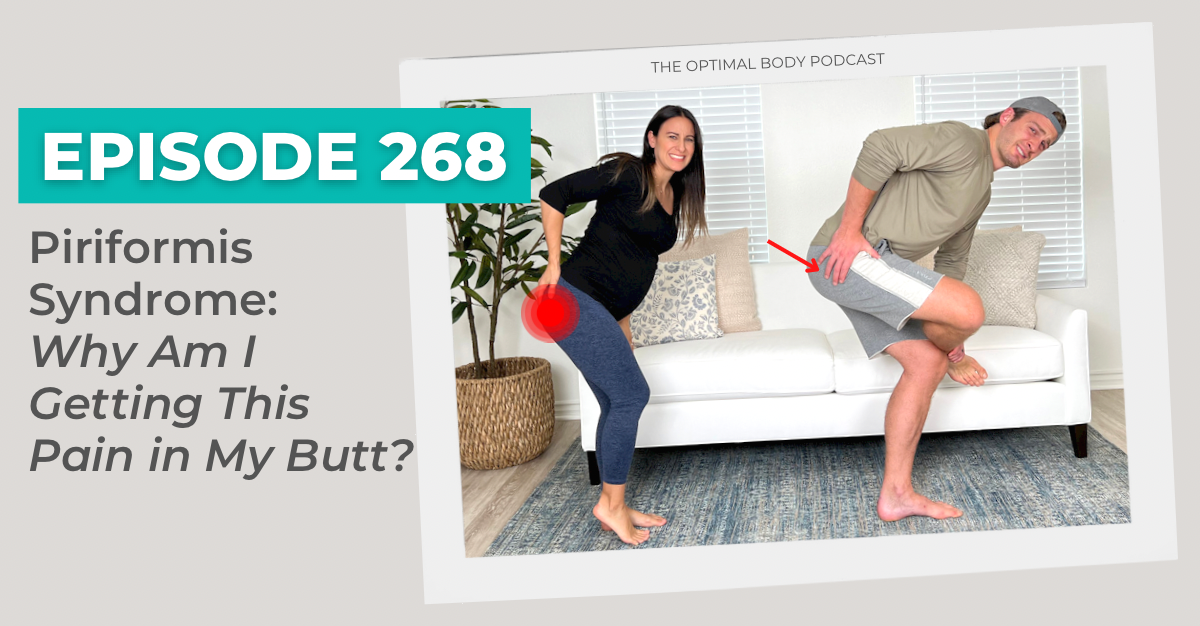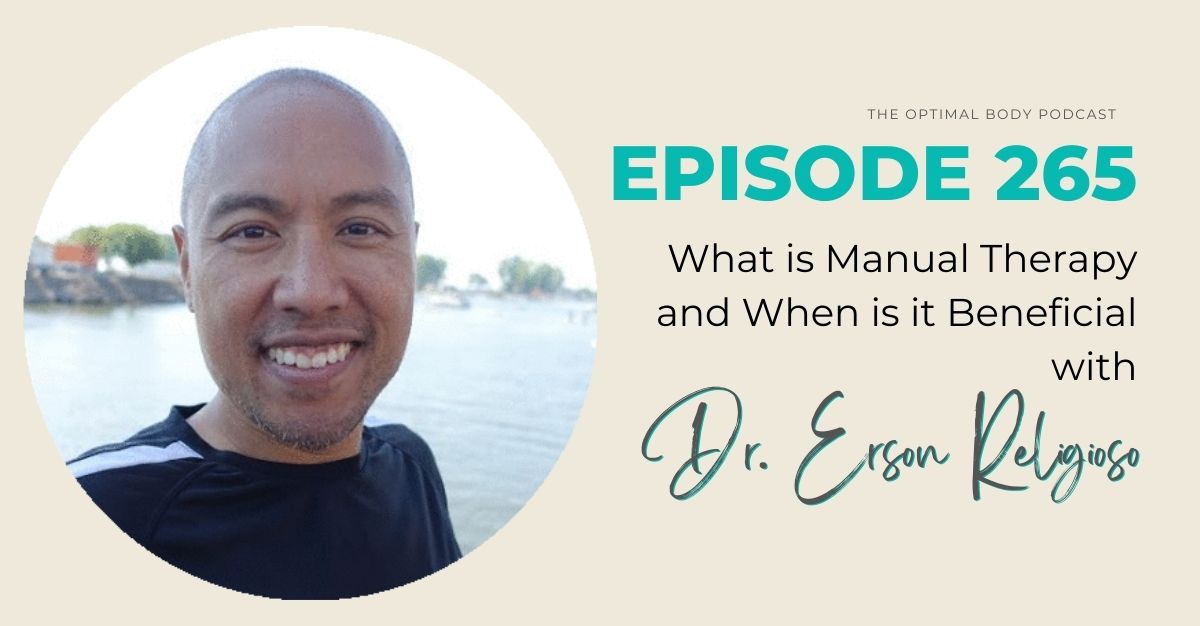Podcast Category: By body part

268 | Piriformis Syndrome: Why Am I Getting This Pain in My Butt?
DocJen and Dr. Dom dive into the how deep gluteal syndrome and piriformis syndrome are related, discussing possible physiological causes for symptoms. Soon after, they discuss what you can do to alleviate your symptoms, targeting nerve glides, postural considerations, inner core coordination with breath, hip rotation, and dynamic load finally. Learn about the stages of rehabilitative progression for piriformis syndrome.

266 | What Should You Do For Your Plantar Fasciitis Pain?
DocJen & Dr. Dom describe what is happening physiologically during plantar fasciitis, especially when the symptoms are present. Then, they present new research that provides insight into the current perspectives on the cause of plantar fasciitis. They discuss how the conventional show may be correlated with the increased prevalence of plantar fasciitis, as well as three phases of rehabilitation to control those symptoms. Finally, they speak about how ankle mobility is a preventative measure to plantar fasciitis. Let’s dive in!

265 | What Is Manual Therapy and When Is It Beneficial with Dr. Erson Religioso
We have Dr. Erson to discuss the truths about manual therapy and how we can optimally use manual therapy to create long term change. Dr. Erson dives into bruising, whether structures are brainy put back into place, how to approach chronic pain, self-performed soft tissue mobilizations, asymmetries, strength training, and how manual therapy facilitates the physiological healing process from an injury.

264 | Why Does My Low Back Hurt When I Lay Flat on the Floor?
Back pain when you lay down? DocJen & Dr. Dom have got you covered! Firstly, they dive into how pelvic positioning affects different biases within the body. Through pelvic tilt talk, they explore why you may not be fully relaxing and how pain is an output of protection. They provide insight into how you can lay down and promote safety within the body, while exploring different positions that re-gain pelvic tilt awareness! Let’s dive in to learn more!

263 | A Better Way to Exercise through Chronic Pain with Dr. Shannon Ritchey
Dr. Shannon Ritchey’s expertise lies making exercise accessible to those in pain. She briefly shares where her passion for physical therapy stemmed from and how muscles can be worked while requiring less demands from joints. Furthermore, she distinguishes the difference between soreness and pain, providing a breathing and grip tool to indicate signs of recovery. Then, she provides insight on what to do on rest days and how to promote recovery when stress relief comes from high intensity workouts. Finally, she discusses whether high intensity training is bad and what it means to load the muscle versus the joint!

262 | Calf Strain or Pain During Activity? What Should You Do?
DocJen & Dr. Dom dive into the anatomy of the calf and how it relates to knee and ankle function. Furthermore, they discuss the causes of different calf strains and the protective mechanisms of the muscle spindles. Furthermore, they explain who is at most risk, stages of calf strains, risk factors for calf strains, and how passive range of motion within tolerance is advisable within the first 48-72 hours of injury. Finally, they provide insight into muscle loss and heel lift, as well as the power of balance training and strength exercises on calf strain rehabilitation. Get those fibres in an optimally healing environment!

261 | Improving Our Foot’s Natural Ability with Podiatrist, Andy Bryant
Do you wear orthotics? Andy Bryant, podiatrist, shares his expertise on foot health and what it means to get the foot to move more naturally. As he shifted from principles of traditional podiatry to functional podiatry, he provides insight into the changes he has made to his advice and how chronic dependence on orthotics is leading to less function in the foot.

260 | Spondylosis: What To Do For Your Aging Spine
DocJen & Dr. Dom provide the truth on the spondylosis diagnosis. Hint: it actually describes the natural aging process of the spine. Interestingly, they share a substantial amount of research suggesting the presence of spondylosis-like MRI presentations in individuals with no symptoms. Then, they dive into the importance of loading and what it means to load the spine with variety when it comes to spondylosis. Therefore, they turn to treat spondylosis as a hypersensitive condition, describing the contributing factors to pain. Finally, they provide insight into the 4 stages of addressing your symptoms!

258 | Chronically Tight Hamstrings? Constantly Stretching Without Improvements?
DocJen & Dr. Dom explain the difference between physiological tightness and the sensation of tightness, highlighting the neural modulation of sensation. They speak to how psychology perpetuates vicious cycles of tightness and how sensations of tightness are a protective response. They describe 4 causes of that “tightness” sensation, describing the relationship between anterior pelvic tilts, foam rolling, types of stretching, and breath on chronic tightness within the hamstring. As a multijoint hamstring, they speak to addressing the proximal and distal ends of the hamstrings, honing in on how to effectively load the hamstrings with adequate lumbopelvic control.

256 | Why Does My Low Back Hurt After Walking Long Distances?
DocJen & Dr. Dom explain why your low back may be flaring up during long-distance walks and what could be contributing to your low back pain. They explain how fear and stiffness an intertwined, honing into how fear could be perpetuating stiffness and vice versa in a vicious cycle. They dive into the importance of finding the root cause of your back pain and the role motor patterning and fatigue play in low back symptoms whilst walking. Then, they dive into tools you can use to modulate your pain experience, explaining the importance of rotation and dynamic stability, activation exercises, foot mobility, and what your low back pain is really communicating!







